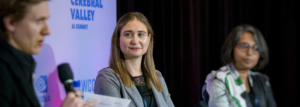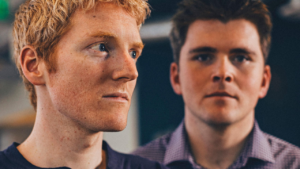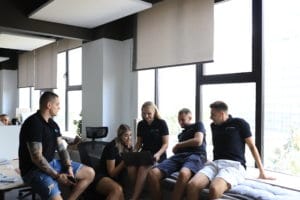From Vision to Vercel: The Inspirational Story of Guillermo Rauch
Imagine a world where websites and applications load instantly, delivering seamless user experiences that captivate and inspire. Guillermo Rauch, a visionary entrepreneur and the driving force behind Vercel and Next.js, stands at the forefront of this digital revolution. As the CEO of these groundbreaking platforms, Guillermo has transformed how we build and deploy web applications and become a revered figure in the tech industry.
With an indomitable spirit and relentless pursuit of innovation, Guillermo Rauch has revolutionized the web development landscape, empowering developers worldwide to create lightning-fast, scalable, and user-centric experiences. His accomplishments speak volumes, as Vercel and Next.js have gained widespread adoption and accolades for their impact on the digital realm.
Join us as we will explore Guillermo Rauch’s transformative leadership, his unwavering commitment to pushing boundaries, and the invaluable lessons we can learn from his extraordinary career in the ever-evolving world of technology.
Early life and background
Guillermo Rauch was raised in a small town outside Buenos Aires, Argentina, where internet access and computers were scarce. It was a close-knit residential community where opportunities to engage with advanced technology were few and far between.
However, his father, a hardworking engineer passionate about all futuristic things, was determined to introduce his family to the wonders of the digital realm. He acquired for his family the first computer when Guillermo Rauch was seven, an event that still remains etched in Guillermo’s memory. He can recall his anticipation and amazement as Windows 95 booted up. That was the beginning of his incredible journey.
The initial steps that ignited his passion for coding
One of the events that significantly impacted Guillermo’s journey was his early introduction to alternative operating systems. When Guillermo first heard about Linux, he found it quite challenging to use.
His foray into programming was a turning point, sparked by his encounters with terminals and the seamless process of writing a file, running GCC, and witnessing the resulting binary. These experiences resonated deeply with him, kindling a genuine affection for coding.
As Guillermo ventured into the world of programming, he encountered his fair share of challenges and setbacks. However, it was the moments of triumph that truly sparked his enthusiasm. Something as simple as observing a test pass with a cascade of green dots on the screen filled Guillermo with thrill and excitement. It was in these seemingly minor victories that his love for programming took root, as he discovered the immense potential and joy that even the smallest characters held.
“I could actually extract so much excitement from these few characters on a black screen.” shares in one of the interviews Guillermo.
From first serious job to starting own company
Rauch recalls a modest yet pivotal moment in his career. Guillermo became captivated by MooTools when he encountered a seemingly simple challenge while building a music catalog website. What actually happened is that he wanted the “Remove” button on each row to delete the corresponding entry on the client side without refreshing the entire page. After some experimentation, Guillermo discovered a workaround using a hidden iFrame that could be posted to, allowing him to detect the callback event. Realizing that this approach was considered a hack, Guillermo’s interest in MooTools was piqued, driving him further into its functionality and capabilities.
At the age of just 16, Rauch already assumed a significant role as a core developer for MooTools. This opportunity marked his initial foray into the world of open-source projects and played a crucial role in shaping his career trajectory.
In the subsequent year, Rauch’s talents garnered recognition, leading him to an invitation to Switzerland. A startup company had boldly embraced MooTools as the foundation for its front-end application code. Aaron Newton, another prominent core developer, recommended Rauch for a consulting position within the firm.
Within a week, Rauch was on a flight to Switzerland, embarking on an unforgettable journey. He vividly recalls meeting the company’s CEO at the train station, who expressed initial disbelief, questioning whether this young individual was their newly appointed engineer. Undeterred, Rauch confidently affirmed his position and embraced the opportunity to showcase his abilities. What was next?
“Then, they opened an office here in San Francisco, and that’s when I decided to move on and start my own company because why not?” shares Guillermo Rauch.
Learnboost – the first startup
In 2010, at the very start of his entrepreneurial journey, fueled by a desire to support educators in streamlining their classroom management through a digital grade book, Guillermo launched LearnBoost, a groundbreaking startup that revolutionized classroom management for teachers through a digital grade book solution.
Initially, Guillermo’s development approach involved using Node. As his team built the code base, a fusion of different programming languages emerged for the backend and JavaScript for the front end. However, with the advent of Node, they decided to go all-in and dedicate every single line of code to JavaScript. After all, why not embrace this new technology wholeheartedly?
This path, though, came with its share of challenges. They found themselves venturing into uncharted territory, employing nascent versions of frameworks like Express. Occasionally, they discovered that these early-stage software solutions fell below expectations, prompting them to develop their tools and contribute them to the open-source community.
Open source became their guiding principle, enabling them to leverage the vast pool of open-source projects internally. They actively recruited talent from the creators behind these projects, fostering a symbiotic relationship that fueled growth on the very platform they relied upon. Guillermo’s commitment to giving back became a defining aspect of his identity, solidifying his reputation as a champion of open-source initiatives.
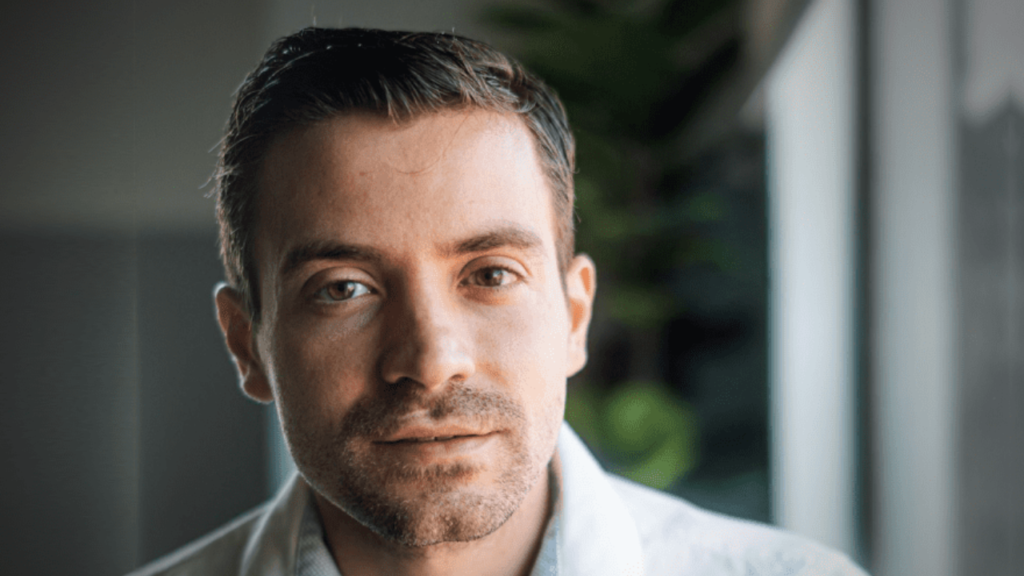
Overcoming challenges & learning from mistakes
Building and running a successful company comes with its fair share of challenges, and Guillermo’s experience with Learnboost was no exception.
Building a product out of alignment
Guillermo’s passion for education led him to create an education product. However, he soon realized that the product they were building didn’t embody the very essence of his own journey. Having learned things like the English language and even coding from the internet, he yearned to create a tool that would empower individual learners.
Learning from personal experience
Drawing from his own experience, Guillermo understood the importance of combining freely available resources with personal creativity. He believed that learners should acquire knowledge and explore practical applications and monetization opportunities. By encouraging others to leverage their acquired skills and bring their creativity to the market, he aimed to maximize their potential and foster innovation.
The power of open source
Guillermo understood how valuable open source can be for acquiring knowledge. He emphasized the importance of sustainable systems that let creators benefit from their work. He used the example of Open SSL to show why providing enough funding and support for essential infrastructure projects is crucial, ensuring their security and longevity.
Embracing adaptability and overcoming emotional hurdles
Guillermo faced direct rejections from potential customers and investors, providing valuable lessons in resilience and perseverance. Moreover, undertaking long-term projects without a clear endpoint was emotionally draining too. After that, Guillermo realized the importance of aligning the company’s mission with personal values and being willing to adapt and change course when necessary.
Making bold shifts and letting go
Guillermo’s journey with Learnboost involved making significant shifts in focus, despite facing resistance from employees comfortable with the previous direction. He realized the importance of letting go of bad ideas and being open to new possibilities. Guillermo concluded that admitting when a solution has reached its limits is crucial for growth and innovation, both in business and the open-source community.
CloudUp
In 2013, the LearnBoost team experienced a rebranding process and transformed it into Cloudup, a file-sharing service that quickly gained traction, attracting a user base of 10,000 individuals. Several months later, the Learnboost team was acquired by Automattic. However, as of November 1, 2019, LearnBoost was officially discontinued and is no longer available.
The birth of Vercel (former ZEIT)
In November 2015, Guillermo Rauch established ZEIT (now called Vercel), a cloud deployment platform allowing developers to deploy their applications and websites with ease. With a relentless drive to make the internet more accessible, he aimed to revolutionize how people create and innovate.
Recognizing the complexities of the internet’s layers and technologies, Guillermo sought to make deploying applications more accessible than ever before. His vision encompassed enabling anyone, regardless of their background or location, to develop and share their ideas effortlessly. With ZEIT, the goal was to empower individuals to complete entire projects independently, eliminating the need for large teams and intricate processes.
“One of my dreams is that the next Facebook or the next Snapchat will be created by someone that has not have to gone through all this education or has had to develop all these connections and hire all these bright people. Really, it can be one girl in Africa. It can be a boy in Bangladesh.”
His next big step was that he and his team created Next.js in October 2016. Initially, Next.js was released as an open-source framework. Since then, it has gained significant popularity and has become a widely adopted framework for building server-rendered React applications.
In April 2020, the company experienced a rebranding and adopted the name Vercel while keeping its triangular logo. Guillermo Rauch’s dedication to innovation, customer satisfaction, and talent acquisition (attracting such talents as Leslie Lemport, Alan Turing, Dan Bernstein, Junio Hamano) has turned Vercel into a game-changing powerhouse.
Under Rauch’s leadership, Vercel underwent a significant transformation, moving from traditional node.js hosting to becoming a pioneering force in the front-end revolution. This shift was fueled by Rauch’s passion for Next.js, leading Vercel to create an unmatched integration between front-end frameworks and their hosting platform. By combining technology and vision, Vercel has empowered developers and pushed the boundaries of what can be achieved in the front-end landscape.
How does Vercel make money?
Vercel generates revenue through various channels, including subscription plans, enterprise solutions, add-ons, and premium versions of its services. Vercel also offers professional training, consulting, and technical support. These diverse monetization strategies enable Vercel to ensure sustainable growth while offering customers flexibility and options to support their development and deployment needs.
Beyond technological prowess, Guillermo Rauch prioritizes building deep relationships with Vercel’s customers. His unwavering dedication to understanding their needs and delivering exceptional experiences has set Vercel apart. Vercel has a diverse range of customers that span across different industries. Some notable clients of Vercel include popular companies and organizations such as Airbnb, GitHub, Uber, Nike, McDonald´s, IBM.
In June 2021, Vercel successfully raised $102 million in a Series C funding round. According to the last report, in November 2021, the company’s valuation was at $2.5 billion.
Bottom line
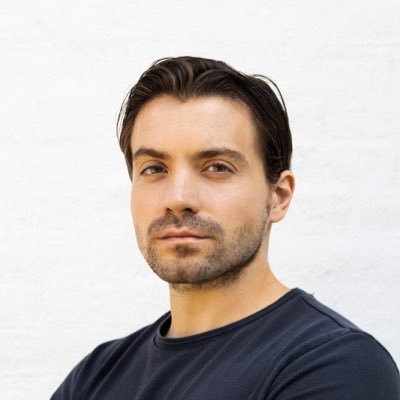
Once, Guillermo Rauch said: ¨Programming is my main hobby¨
This simple statement reflects his profound passion for the craft, highlighting how programming transcends mere work or duty for him. It signifies a deep connection to the art of coding, where he finds joy, fulfillment, and endless possibilities. And as we all know, success becomes inevitable when we have a genuine passion for our work.
Moreover, through his words, he inspires others to pursue their passions wholeheartedly and embrace the transformative power of a hobby that brings both personal fulfillment and professional growth.
Guillermo Rauch’s journey is not only about love and dedication, it is also about the power of courage, self-belief, and a relentless pursuit of making a difference. He didn´t stop believing in himself when he was underestimated due to his age, he didn´t give up when he faced numerous challenges, though he also had strength and mindset to admit on time that certain things didn´t work out and that it´s time to move on to create something better. With his visionary mindset, he fearlessly embarked on the entrepreneurial path, founding Vercel and revolutionizing the web development landscape.
Throughout his career, he has embraced challenges head-on, never shying away from pushing boundaries and finding innovative solutions. His dedication to improving the world through technology inspires all aspiring entrepreneurs and developers. Guillermo Rauch’s story reminds us that with passion and perseverance, we can shape our own destinies and make a significant impact on the world.



